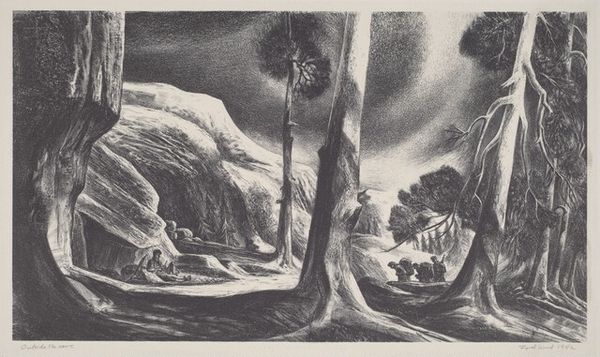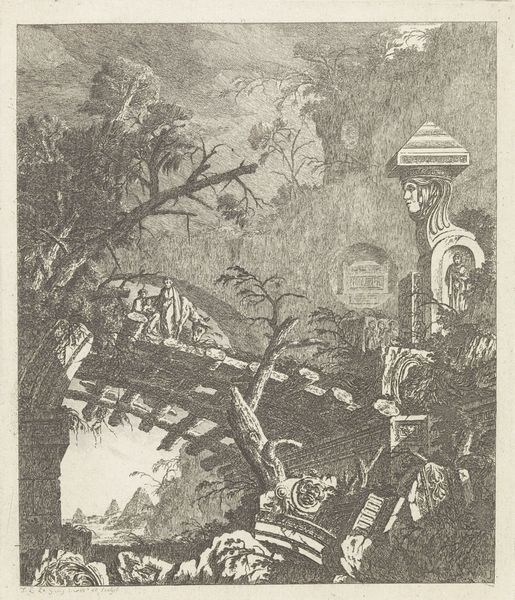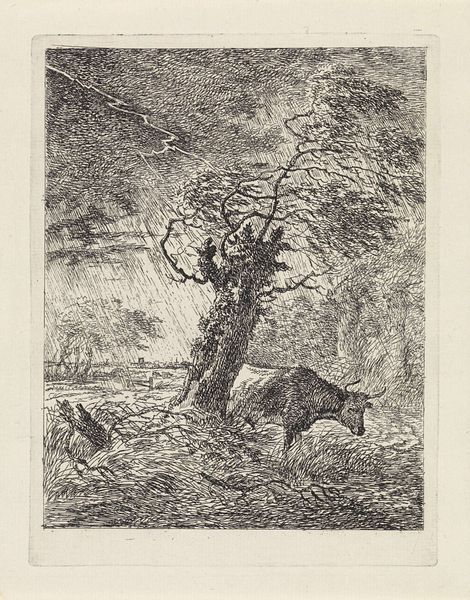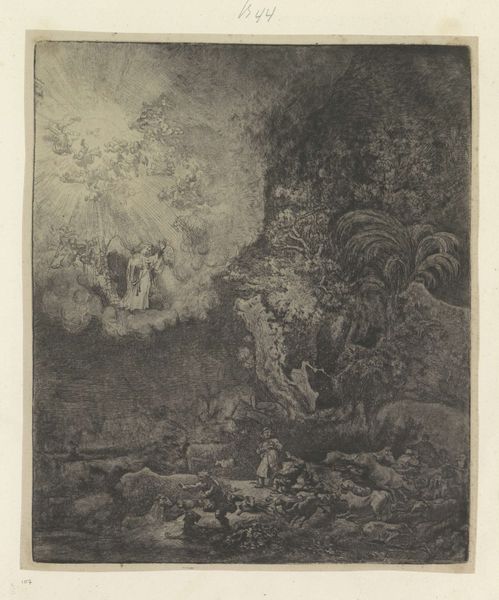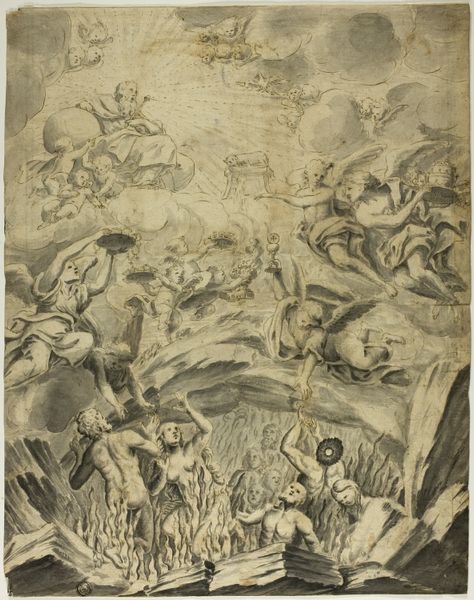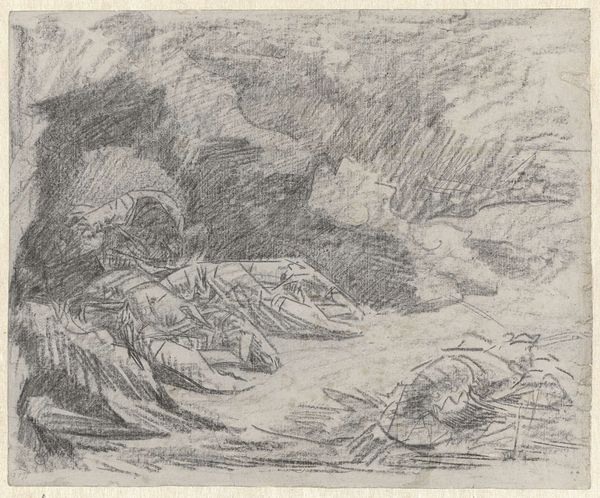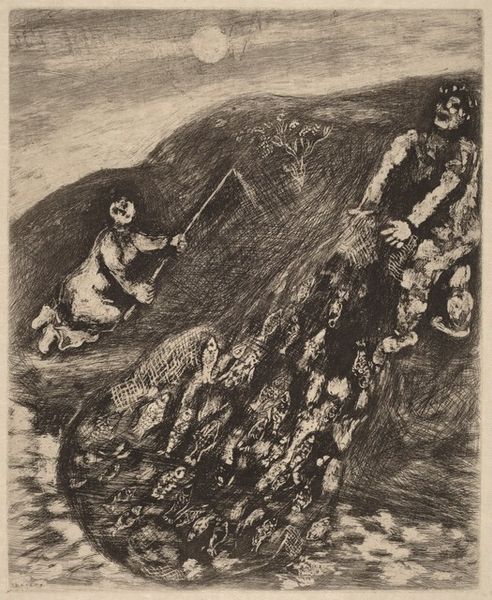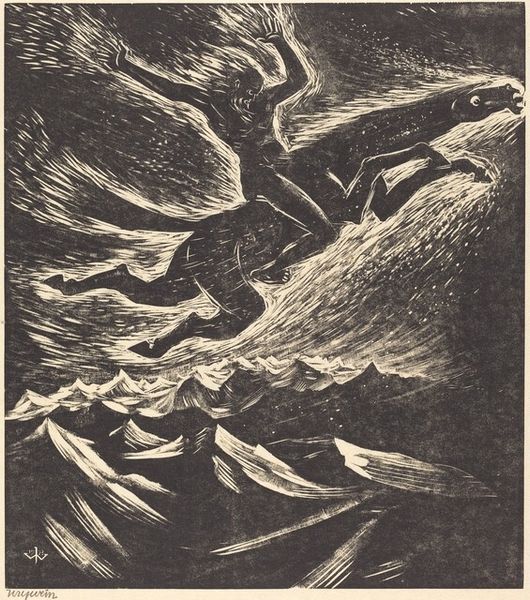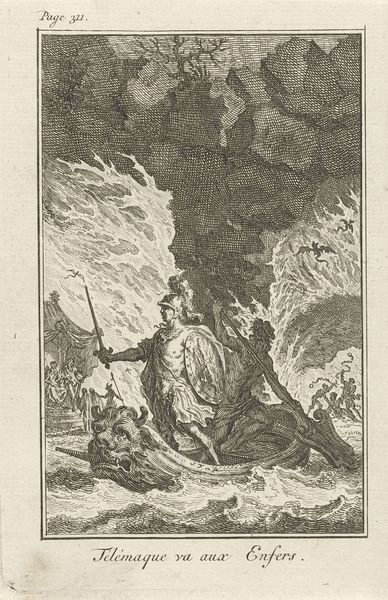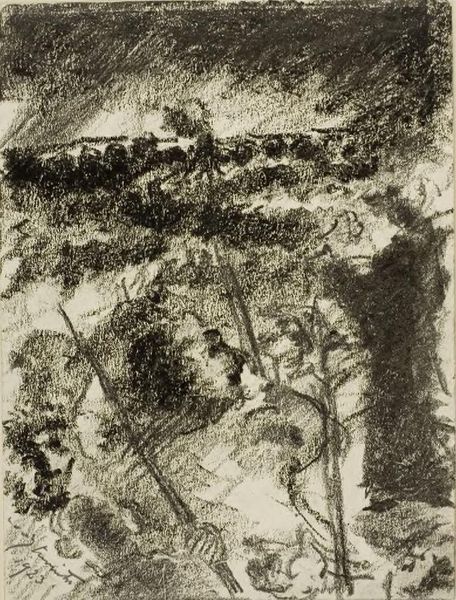
drawing, print, paper, charcoal
#
drawing
# print
#
landscape
#
charcoal drawing
#
paper
#
pencil drawing
#
charcoal
Dimensions: 254 × 193 mm
Copyright: Public Domain
Curator: Joseph Pennell’s "Madrid al Fresco," dating back to approximately 1903, offers us a glimpse into leisure during that era. Created with charcoal and pencil on paper, this print currently resides at the Art Institute of Chicago. Editor: It feels like a hazy dream, or maybe a memory half-forgotten. The contrast is arresting, creating an idyllic glade filled with shadowy figures in a swirl of celebration. Like a picnic viewed from another realm. Curator: Indeed. Note the strategic use of chiaroscuro. The composition’s success lies in Pennell’s effective manipulation of light and shadow, structuring depth. The placement of the figures creates not just depth, but directs the viewer’s gaze—we’re participants in their revelry, observing this vignette as the eye follows the brilliant interplay of darkness and light across the surface. Editor: The energy's remarkable. I get the impression of almost frenetic celebration – as if people are revelling in some newfound liberation. Do you sense that the figures near the centre form a sort of vortex? Maybe of some spiritual ecstatic dancing? I feel the raw emotion despite the formal technique. Curator: Your reading is certainly plausible, although my engagement resides principally in understanding its formal qualities. One can view the vortex you speak of as a structured nucleus around which the composition hinges. But yes, the texture achieved through charcoal elicits powerful sensations. Pennell doesn’t simply portray a landscape; he constructs a sensation. Editor: Absolutely! Art should make us *feel* and Pennell taps into some primordial sense of communion, all expressed through those dramatic contrasts. Almost like firelight flickering on a cave wall, where ancient humans shared myths. Curator: An interesting parallel. The application of critical distance to analyse art and consider its forms allows viewers such as yourself to derive emotive meaning, a kind of feedback loop mediated by discourse. I appreciate such creative thought. Editor: And I'm thankful for the tools, Joseph Pennell, for lending us the portal, the looking glass.
Comments
No comments
Be the first to comment and join the conversation on the ultimate creative platform.
